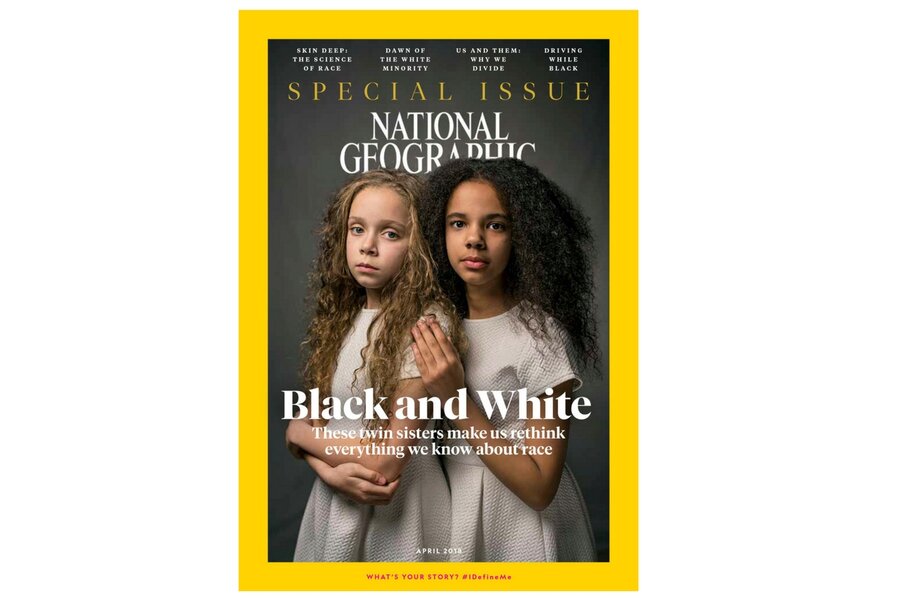National Geographic reckons with its racist past
Loading...
| Washington
National Geographic acknowledged on Monday that it covered the world through a racist lens for generations, with its magazine portrayals of bare-breasted women and native brown-skinned tribesmen as savage, unsophisticated, and unintelligent.
"We had to own our story to move beyond it," editor-in-chief Susan Goldberg told The Associated Press in an interview about the yellow-bordered magazine's April issue, which is devoted to race.
National Geographic first published its magazine in 1888. An investigation conducted last fall by University of Virginia photography historian John Edwin Mason showed that until the 1970s, it virtually ignored people of color in the United States who were not domestics or laborers, and it reinforced repeatedly the idea that people of color from foreign lands were "exotics, famously and frequently unclothed, happy hunters, noble savages – every type of cliché."
For example, in a 1916 article about Australia, the caption on a photo of two Aboriginal people read: "South Australian Blackfellows: These savages rank lowest in intelligence of all human beings."
In addition, National Geographic perpetuated the cliché of native people fascinated by technology and overloaded the magazine with pictures of beautiful Pacific Islander women.
This examination comes as other media organizations are also casting a critical eye on their past. The New York Times recently admitted that most of its obituaries chronicled the lives of white men, and began publishing obituaries of famous women in its "Overlooked" section.
In National Geographic's April issue, Ms. Goldberg, who identified herself as National Geographic's first woman and first Jewish editor, wrote a letter titled "For Decades, Our Coverage Was Racist. To Rise Above Our Past, We Must Acknowledge It."
"I knew when we looked back there would be some storytelling that we obviously would never do today, that we don't do, and we're not proud of," she told AP. "But it seemed to me if we want to credibly talk about race, we better look and see how we talked about race."
Mr. Mason said he found an intentional pattern in his review.
"People of color were often scantily clothed, people of color were usually not seen in cities, people of color were not often surrounded by technologies of automobiles, airplanes, or trains or factories," he said. "People of color were often pictured as living as if their ancestors might have lived several hundreds of years ago and that's in contrast to Westerners who are always fully clothed and often carrying technology."
White teenage boys "could count on every issue or two of National Geographic having some brown skin bare breasts for them to look at, and I think editors at National Geographic knew that was one of the appeals of their magazine, because women, especially Asian women from the Pacific islands, were photographed in ways that were almost glamour shots."
National Geographic, which now reaches 30 million people around the world, was the way that many Americans first learned about the rest of the world, said professor Samir Husni, who heads the Magazine Innovation Center at the University of Mississippi's journalism school.
Making sure that kind of coverage never happens again should be paramount, Professor Husni said. "Trying to integrate the magazine media with more hiring of diverse writers and minorities in the magazine field is how we apologize for the past," Husni said.
Goldberg said she is doing just that, adding that in the past, the magazine has done a better job at gender diversity than racial and ethnic diversity.
"The coverage wasn't right before because it was told from an elite, white American point of view, and I think it speaks to exactly why we needed a diversity of storytellers," Goldberg said. "So we need photographers who are African-American and Native American because they are going to capture a different truth and maybe a more accurate story."
National Geographic was one of the first advocates of using color photography in its pages, and is well known for its coverage of history, science, environmentalism, and the far corners of the world. It currently can be found in 172 countries and in 43 languages every month.
This article was reported by The Associated Press.







